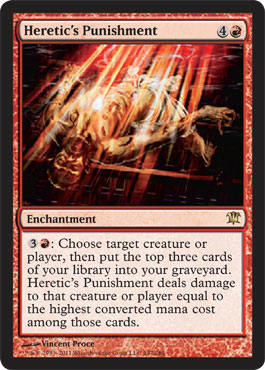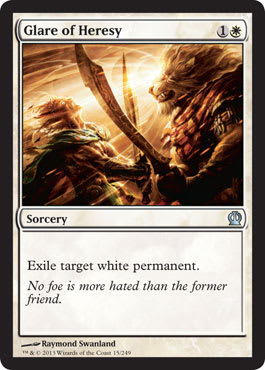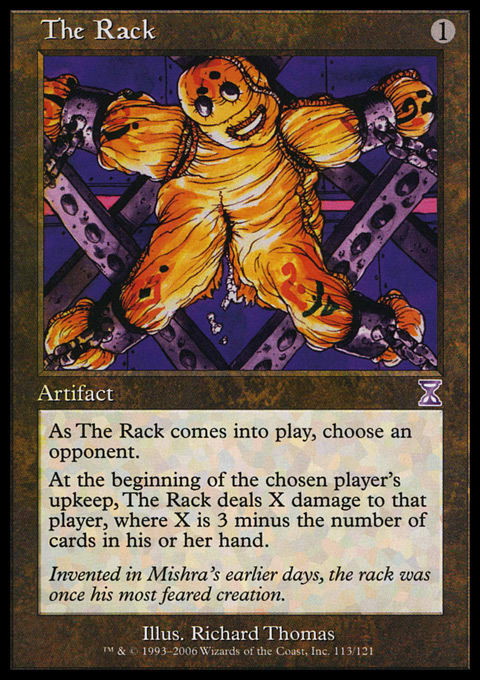In contemporary culture, an inquisition is a synonym for cruelty, tyranny, and terror. It’s an act, and yet, it’s often capitalized as a proper noun and known only as a time in Spain’s history when it lost its mind. It’s also a false distortion what actually happened.
Luckily, with Shadows over Innistrad giving us some flavorful tidbits to gnaw on, we have an opportunity to not only look at some art, but also examine some history too by using one double-faced card to lead us. Let’s go!

Avacynian Missionaries by Wayne Reynolds
Spanish Inquisition
The regions of Spain called Castile and Aragon when unified under the marriage of Ferdinand and Isabella in 1469. Prior to this, Spain had splintered after the Roman Empire, and mini-kingdoms ruled. Their goal was rather simple: Unify Spain again, remaking what the Romans called Hispana. Their goal of making it whole again would require a ton of conquests, the entire Granada War, and having one religion, upon which they would deem the monarchs the correct and rightful rulers. Getting the entire Iberian peninsula and ousting Moors wasn’t an easy task by military might, but it was very doable. What was more difficult was getting their people to conform to one state, and the way to do so would be uniting under one religion: Catholicism.
Ferdinand and Isabella had two religions they had to convert or banish for full allegiance under one religion: Judaism and Islam. The Islamic Moors were largely located in the Southern regions and handled via conquest. The Jews, so believed the monarchs, wouldn’t entirely convert. They feared they practiced their traditions and religion in secret. It’s interesting because the Roman Empire had a ton of myths, sects, and carryover from conquered areas. It wasn’t without bloodshed, but keeping Saturnalia and “making it” Christmas is a pretty notable example.
So, from our Avacynian Missionaries trying to convert heretics, about a decade after the marriage, the inquisitors became real as they pleaded for help. Pope Sixtus IV wrote a Papal Bull (a document really), called the Exigit Sinceras Devotionis Affectus, which was okaying an inquisition in the region of Castile, Spain. It later spread to the entire country we see today.
What that document allowed was the ability for the monarchs, Ferdinand and Isaballa, the exclusive right to name their own inquisitors. Normally, the Papal authority would do it themselves. Imagine modern police forces asking for additional ammunition and authority . . . and then giving it to themselves, with oversight by themselves.
It was a full campaign to unify the kingdom under guidance from the monarchs, blessed by the Pope, to keep the peace and seek out hidden Jews. It must be made clear, though, it was more a political campaign than a religious campaign. Religion was just the easy choice to suppress any non-likeminded Spaniards.
For about thirty years (approximately 1480–1510), Spain was applauded by the rest of Europe for being “fully Christian.” If you need to memorize a date, it’s 1492 for the Alhambra Decree, not Christopher Columbus. That decree gave all Jews a choice: convert or be expelled.
Inquisitors went after blasphemy, Jews, Protestants, and anything heretical in nature that went against the monarchs and the Catholic Church. It wasn’t all torture, though—what we think of it is largely satirized by Monty Python and film like the Princess Bride. Yes, there were devices that forced people to recant or say their true intentions, but Henry Kaman had an entire academic career fighting against the Black Legend, that these inquisitors were simply sadists who enjoyed torture.

And then things kind of settled down, right?
Or the inquisition or Tribunal of the Holy Office of the Inquisition in Spain lasted until 1818.

Lunarch Inquisitors by Wayne Reynolds
Inquisition, the Deck Made Real
Knowing an abridged history now, the Innistrad inquisition is bit more Black Legend than reality. The archangel Avacyn already had dominance over the human population of Innistrad, it was just ratcheted up to eleven before her untimely death. Now, we’re left with roaming inquisitors with no guidance or political reason for existing.
We don’t know the full extent on how the inquisitors of Gavony are affecting the rest of Innistrad, but we do know that at least Planeswalker Arlinn Kord, and probably other werewolves and Wolfin, aren’t really having it with the inquisitors. Check out the mask in her hand:

Crop of Arlinn, Embraced by the Moon by Winona Nelson
To say an inquisition is fast is wrong.
To say the death of Avacyn will halt all inquisitions is also incorrect.
With a large cult fully penetrated into Innistrad daily life, our inquisitors have a lot to handle. To combat the heresy of the faithful, I’ve built you a deck.
Innistrad Insquisition ? Vorthos Casual | Mike Linnemann
- Creatures (23)
- 2 Syndic of Tithes
- 4 Elite Inquisitor
- 4 Moorland Inquisitor
- 1 Preacher
- 2 Elgaud Inquisitor
- 4 Avacynian Missionaries
- 1 Inquisitor's Ox
- 4 Paragon of New Dawns
- 1 Mikaeus, the Lunarch
Continuity aside, the deck needs a leader, and while a singular Preacher gets the word out about rooting out a singular cult leader, Mikeaus (or a Pope-like figure) will be needed to lead the campaign against the heretics.
Our Elite Inquisitors will matchup with the Moorland Inquisitors, obviously more accustomed to the landscape, to root out the minor creatures willing to stand up to the church. Syndics will help fund your inquisition campaign and like always—money ends most conflicts. I see the Paragon of New Dawns as the propaganda person and the Missionaries as the conversion-or-death sort of folks!
A singleton Inquisitor's Ox is there to carry an artifact . . .
Innistrad Insquisition ? Vorthos Casual | Mike Linnemann
- Spells (15)
- 2 Crusade
- 2 Crackdown
- 2 Evangelize
- 2 Inquisitor's Snare
- 2 Divine Sacrament
- 2 Inquisitor's Flail
- 1 Gallows at Willow Hill
- 1 Martyr's Cry
- 1 Bullwhip
There is our artifact if the heretics don’t recant. We have the humans to make it go live, too!
The Crusade is important due to the artwork; it’s almost eerie how visually continuous it is! Evangelize is more flavorfully thematic, forcing all natures of human and beast to conform.
The Divine Sacrament is a morbid view how more death will increase religious fervor, with the Inquisitor's Snare and the Bullwhip as tools against the “foes.” I think Martyr's Cry is the overreach of white, and altogether thematic, with the player piloting the deck acting as the religious leader, sacrificing all for a singular goal.
The Flail is a last-second addition to make the deck work a little smoother with our first strikers. Also, it brings the Black Legend myth into both reality and to question if you should use it. As any removal spell (pushback from the community or the cults) will keep it in check.
Of course, many Innistrad lands exist, but it’s the Adam Paquette Return to Ravnica Plains that felt the most flavorful to this deck. It’s misty, it’s religious in tone, and we sit from a tall steeple, looking down on our loyal subjects, bent to our will.
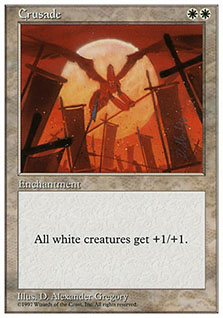 | 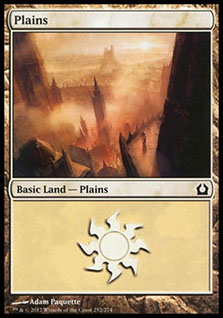 |
The inquisitors aren’t going away anytime soon. You may as well join up with them. Giving this casual deck a try (and their beliefs) will immerse you into the flavor of the plane while also being mega-cheap! With a little customizing, you can have the whole deck for under $30! Just copy and paste the full deck into Cool Stuff Inc’s deck-builder, or click the yellow button on the compiled list below, and you’re off to the races. We don’t talk about it often enough, and it takes deck-building from minutes and hours to seconds.
Be careful, heretics. Avacyn may be gone, but her inquisitors live on.
-Mike
Innistrad Insquisition ? Vorthos Casual | Mike Linnemann
- Creatures (23)
- 2 Syndic of Tithes
- 4 Elite Inquisitor
- 4 Moorland Inquisitor
- 1 Preacher
- 2 Elgaud Inquisitor
- 4 Avacynian Missionaries
- 1 Inquisitor's Ox
- 4 Paragon of New Dawns
- 1 Mikaeus, the Lunarch
- Spells (15)
- 2 Crusade
- 2 Crackdown
- 2 Evangelize
- 2 Inquisitor's Snare
- 2 Divine Sacrament
- 2 Inquisitor's Flail
- 1 Gallows at Willow Hill
- 1 Martyr's Cry
- 1 Bullwhip
- Lands (22)
- 22 Plains
















